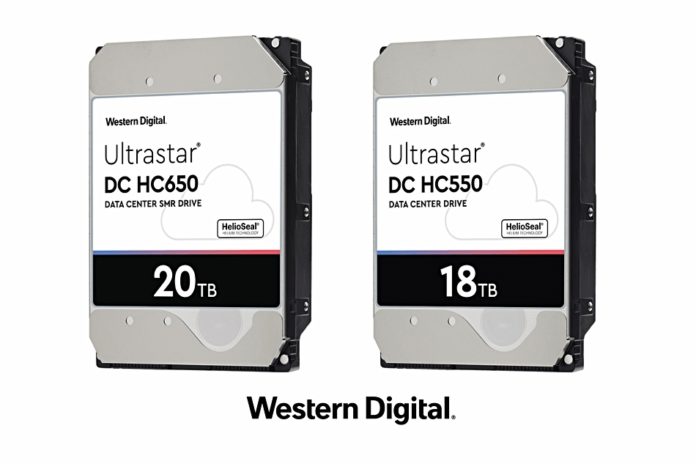Western Digital has announced 18 and 20TB disk drives using a partial microwave-assisted magnetic (MAMR) recording technology implementation (ePMR). Sample shipments are due by the end of the year.
The path is now clear for WD to lift disk capacity to 40TB and beyond.
The Ultrastar data centre DC HC550 is a helium-filled drive in 16TB and 18TB versions. It uses either 8 or 9 platters and has conventionally recorded tracks. The drive implements a form of energy-enhanced perpendicular magnetic recording (ePMR) which has not been explained.
The 20TB DC HC650 has 9 platters and uses shingled magnetic recording (SMR), with zones of partially overlapping tracks, to cram in an extra 2TB of capacity over the HC550.

Current PMR (perpendicular magnetic recording) technology is reaching an areal density limit as the bit areas become too small to sustain a stable magnetic polarity. MAMR uses a more stable recording medium which can sustain smaller bit areas. But writing data now involves beaming microwave energy at the bit area to enable the magnetic polarity to be set by the read/write head.
Christopher Bergey, SVP and GM of WD Data Center Devices, told us in a briefing that WD has a 4-model range of data centre drives:

The HC330 is the only 10TB air-filled drive with as few as six platters. Bergey said 14TB drives hit the market sweet spot, citing TrendFocus research saying that will be the dominant capacity point through to mid-2020.
WD also has a 15TB HC620 which uses shingling but there is no pure 16TB drive in this list. Toshiba has a 16TB drive in its lineup as does Seagate with the 16TB Exos. Bergey said WD is skipping the 16TB level to progress straight to these 18 and 20TB capacity drives.
Shingled drives rule over flash
The company believes its host-managed SMR drives will become popular, and estimates half of its disk drive exabytes shipped will be on SMR by 2023.
Bergey said demand for high-capacity data centre disk drives will be sustained for several years. In other word they will not be washed away by SSDs using quad level cell or penta level cell flash. WD pointed to TrendFocus estimates of disk drive exabyte shipments to grow 36 per cent annually between 2018- 2023..
Also, WD cites Joseph Unsworth, Research VP at Gartner, who said, “In data centres, lower capacity/mission critical HDDs are increasingly being replaced by flash/SSD technology, however, the nearline capacity business critical HDD technology maintains a considerable advantage in ASP/GB. NAND Flash/SSD technology still has a long way to go to even reach 3X the ASP/GB so we still see a long-term (post-2030) opportunity for these capacity HDDs.”
HC330 and HC530 drives are available now. WD will sample the HC650 and HC550 drives to select customers by the end of the year, with qualification and volume shipments beginning in the first half of 2020. In other words volume ships of these drives are about nine months away.








